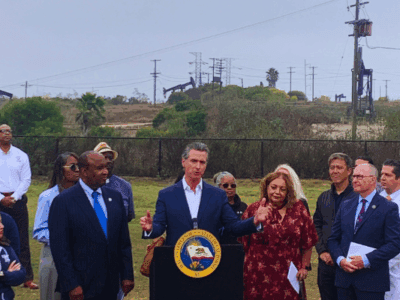The story of the Price-Anderson Act: how Congress made nuclear power financially viable in the U.S. by eliminating accountability for risk
 Ever wonder how nuclear power plants have been able to get financial backing in the U.S. despite the huge, and largely uncertain, potential risks they pose? Or why there are nuclear plants within a few hours’ drive of major population centers such as Los Angeles and New York? Or who will pay the costs that result from any future U.S. nuclear accident? A law called the Price-Anderson Nuclear Indemnity Act provides at least part of the answer to each of these questions. And the answer isn’t pretty. Anyone who is still convinced that nuclear power is going to save the world from climate change (which is certainly still not a widely-held view), and believes that siting more nuclear plants in the U.S. is part of the answer, needs to grapple with the serious perverse incentives and misaligned risks that Price-Anderson has perpetuated.
Ever wonder how nuclear power plants have been able to get financial backing in the U.S. despite the huge, and largely uncertain, potential risks they pose? Or why there are nuclear plants within a few hours’ drive of major population centers such as Los Angeles and New York? Or who will pay the costs that result from any future U.S. nuclear accident? A law called the Price-Anderson Nuclear Indemnity Act provides at least part of the answer to each of these questions. And the answer isn’t pretty. Anyone who is still convinced that nuclear power is going to save the world from climate change (which is certainly still not a widely-held view), and believes that siting more nuclear plants in the U.S. is part of the answer, needs to grapple with the serious perverse incentives and misaligned risks that Price-Anderson has perpetuated.
In 1957, the United States wanted to promote development of nuclear energy. Insurers were unwilling and unable to provide risk coverage to this then-fledgling industry whose major product possesses all the features of uninsurability.
Insurance spreads the risk of future bad events, and compensates victims when those risks materialize. By spreading risk, insurance allows financing and other aspects essential to project development to fall into place. Investors will avoid projects where liabilities are uncertain. Managing risk is a particular problem for activities characterized by uncertainty, correlated risks, potential for a single high-magnitude event wipeout. Nuclear power generation possesses all these qualities.
Recognizing this barrier to nuclear power development, as insurance was sharply limited for nuclear plant development in the 1950s, Congress passed the Price-Anderson Act to help the industry get started. In that era, there might possibly have been good reason to imagine a peaceful, productive use for nuclear fission. Our country’s hopes were high.
Price-Anderson replaced the private insurance market by creating two risk pools to deal with most of the liability risks of nuclear power generation. First, there is an insurance pool, paid for by nuclear power plant operators, which is entirely underwritten by one insurance carrier. This pool’s capacity is currently about $375 million. Second, the Act created a retroactive common pool that requires all nuclear plant operators to share the liability equally, without regard to fault, if there’s an accident at any nuclear facility, up to a specified limit. The pool limit is currently about $11.6 billion in the aggregate.
Importantly, the law caps the overall liability of the insurance industry at the limit of these risk pools, and spreads the risk of loss from an accident at any domestic nuclear power facility evenly among all existing facilities.
Although the law was originally intended to help the industry get on its feet, with a ten-year time horizon, nuclear power has continued to be uninsurable, as well as unviable without liability caps. The law has been reauthorized many times, currently through 2025, with no significant changes other than modest increases in the pool amount.
Public Citizen and a wide array of academic commentators have criticized the Price-Anderson Act. These articles’ criticisms speak for themselves, and are multi-faceted and in some cases rather nuanced. But broadly, the
law’s basic features raise some significant issues. First is compensation for future harm. Individuals and businesses lose their right to compensation above the cap, and the compensation system is capped at an amount that would likely not be adequate if there were a serious nuclear accident in a highly-populated area. If actual damages were to exceed the cap, who would pay? It’s possible that the federal Stafford Act could provide some disaster relief. It’s likely that the government would step in and provide more compensation to victims. Other than that, individuals and businesses would be on their own. What’s very unlikely is that the nuclear industry would have to pay.
Second, as a result of this system, investors in the industry get the wrong price signal, artificially deflating the potential costs. In a well-functioning market, investors in the nuclear power industry would have to consider the lifecycle costs of the power generation, and would be motivated to invest where the benefits exceed the costs. But under the Price-Anderson system, all the potential future costs in excess of the liability cap are externalized onto others. No one would invest in nuclear power plants in the absence of this market distortion. While there may be other benefits to nuclear power – such as its lack of greenhouse gas emissions – the financial markets’ unwillingness to manage risk for the industry is a sign that the potential costs are enormous and subject to extraordinary levels of uncertainty.
Third, and perhaps most bizarrely, the Price-Anderson Act provides perverse incentives for selecting sites for nuclear facilities. Everyone pays equally into the pool, up to the cap. And the cap is the same for any accident at any facility. So if a disaster occurs at any nuclear plant, the highest possible payout in the event of a serious disaster is the same near our most highly-populated areas as in our most remote areas. But the magnitude of potential financial risk from a nuclear accident is much, much higher near New York or Los Angeles than in a more remote area. Yet there is no incentive to avoid siting near population centers.
Finally, because the risk is spread equally in the “no-fault” pooling system, no operator has a liability-based financial incentive to be safer than anyone else in the pool. With the prospect of equal payouts regardless of whose plant melts down, liability simply can’t be a serious factor in making safety decisions.
On the other hand, as some commentators have pointed out, it’s possible that nuclear plant operators wouldn’t be able to handle higher liability limits anyway, and that an operator facing major liability would simply choose bankruptcy if its liability exceeded its assets. The Price-Anderson Act also provides for strict liability, so plaintiffs wouldn’t have to prove negligence to get compensation from the pool. And finally, the nuclear industry and Nuclear Regulatory Commission point to our worst American nuclear disaster to date, Three Mile Island – which resulted in payouts only in the hundreds of millions – as evidence that the current fund will provide enough capital to address any conceivable accident.
I don’t think any of these arguments are persuasive. It’s possible that operators would be unable to pay claims and would become insolvent, but that is a poor reason to cap liability, especially through a system that provides such backward incentives for siting and safety. While strict liability provides some comfort – of course, strict liability is more favorable to plaintiffs than negligence in terms of proving liability, and creates a more efficient system – but again, in combination with the liability cap, it provides incentives to be no safer than anyone else in the industry. Finally, the industry view of its potential liability, unsurprisingly, appears to be unrealistically sanguine. Finance experts and the Japanese government have estimated liability for the recent Japanese nuclear disaster at the Fukushima Daiichi reactor complex, however, at $25 billion to $130 billion, with the Japanese government taking the position that there are no limits on the operator’s potential liability.
It’s unlikely, for a variety of reasons, that nuclear power is about to make a resurgence in the United States. But it’s time for us to re-think the Price-Anderson Act, because the law tips the scales in favor of terrible decisionmaking, and leaves us open to enormous potential costs that plant operators don’t have to take into account.







2 Replies to “The story of the Price-Anderson Act: how Congress made nuclear power financially viable in the U.S. by eliminating accountability for risk”
Comments are closed.